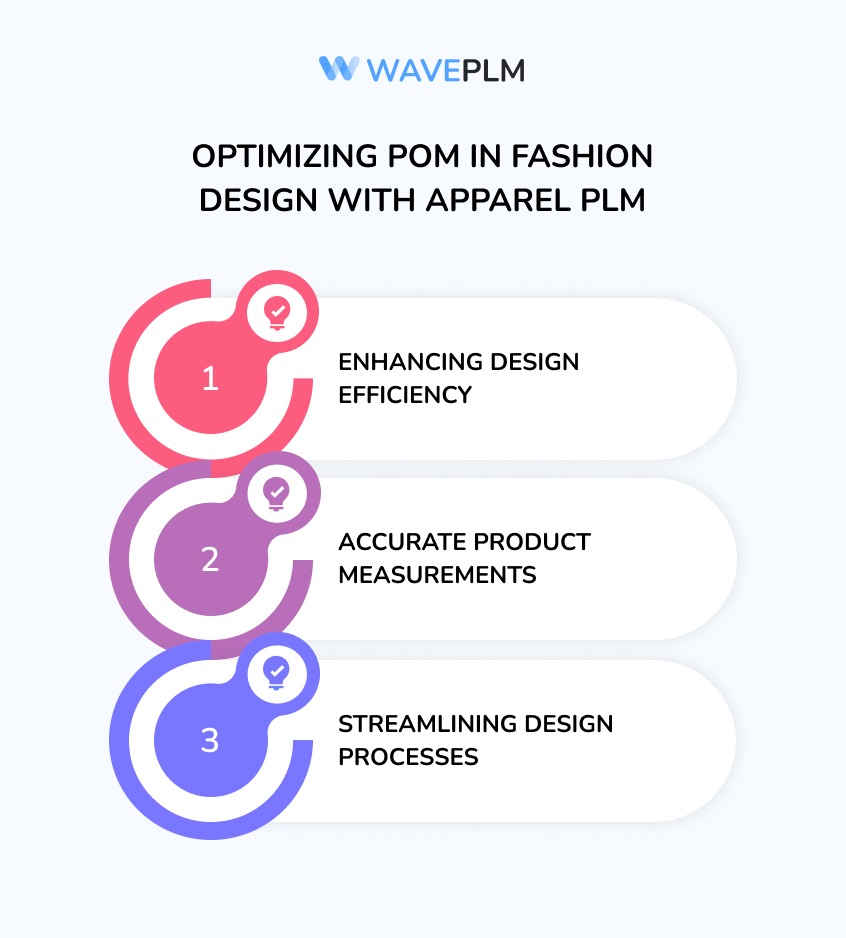
In the fast-paced world of fashion design, staying ahead of trends while maintaining high-quality standards is crucial. One of the key aspects of this process is the optimization of Points of Measure (POM). Combined with Product Lifecycle Management (PLM) systems, the fashion industry can achieve greater efficiency, accuracy, and streamlined processes. In this article, we’ll define POM, how it can be optimized, and the essential role of PLM in this context.
POMs Meaning and Its Optimization
POM stands for Points of Measure in fashion design, referring to the specific measurements that define the dimensions and fit of a garment. These measurements are critical for ensuring consistency and accuracy in the production of clothing across different sizes and styles.
The meaning of POM is to refer to the specific measurements and sizes of a garment. These ensure it fits well and meets quality standards. Each piece of clothing has multiple POMs, which could include measurements such as sleeve length, chest width, or inseam. These measurements are the definition of POM, crucial for maintaining consistency across different sizes and styles within a collection.
Optimizing POM involves refining these measurements to ensure they are accurate and standardized. Accurate measurements are crucial in fashion design. Even tiny mistakes can cause big problems, like poorly fitting clothes or issues during production.
The Role of PLM Software in POM Optimization
Product Lifecycle Management (PLM) is a comprehensive apparel management software solution that helps manage the entire lifecycle of a product, from initial design to final production. In the context of fashion design, apparel PLM plays a critical role in optimizing POM by providing a centralized platform where designers, manufacturers, and other stakeholders can collaborate.
PLM systems allow for the seamless integration of POM data across various stages of the design and production process. This integration ensures that all team members have access to the most up-to-date measurements and specifications, reducing the likelihood of errors and inconsistencies. Furthermore, fashion PLM can automate the process of updating POMs when design changes are made, ensuring that all parties are working with the latest information.

Enhancing Fashion Design Efficiency with PLM Systems
The use of PLM software in fashion design significantly enhances efficiency. By centralizing POM data and other design specifications, PLM systems eliminate the need for manual updates and communication, which can be time-consuming and prone to errors. Instead, designers can focus on creativity and innovation, knowing that the technical aspects of their designs are being accurately managed.
Moreover, PLM enables faster decision-making by providing real-time insights into the status of a product’s development. Whether it’s adjusting a POM to improve fit or making changes to fabric specifications, such fashion industry software as PLM ensures that these updates are reflected instantly across the entire design and production chain.
Ensuring Accurate Product Measurements
Accurate POMs are the foundation of any successful fashion collection. Inaccuracies in measurements can lead to poorly fitting garments, which can damage a brand’s reputation and result in costly returns. By optimizing POM through PLM systems, fashion brands can ensure that their products meet the highest standards of fit and quality.
PLM software supports this accuracy by offering tools for precise measurement recording and analysis. Designers can input measurements directly into the system, where they can be cross-referenced with other design elements, such as fabric stretch or pattern grading. This level of precision ensures that the final product aligns perfectly with the initial design vision.
Streamlining Design Processes
The fashion industry is known for its tight deadlines and fast-paced production schedules. Streamlining design processes is, therefore, essential to staying competitive. PLM systems facilitate this by automating many of the tasks associated with POM management and other design functions.
For instance, once designers define POMs, fashion PLM automatically generates technical packs (tech packs) with all necessary measurements and specifications for manufacturers. This automation reduces the time spent on manual data entry and ensures that all stakeholders are working with the same, accurate information.
Additionally, PLM systems often include version control features, which track changes to POMs and other design elements over time. This feature not only helps maintain consistency but also provides a clear history of how a design has evolved, which can be invaluable for future projects.
Conclusion
Optimizing POM is a critical aspect of successful fashion design, ensuring that garments fit well and meet quality standards. The integration of PLM systems in this process is essential, offering tools for accuracy, efficiency, and streamlined workflows. Using PLM software for POM optimization helps fashion brands improve design, minimize errors, and speed up product launches.
Adopting these technologies helps maintain a competitive edge while ensuring the final product matches the brand’s vision and customer expectations.





Leave a Reply